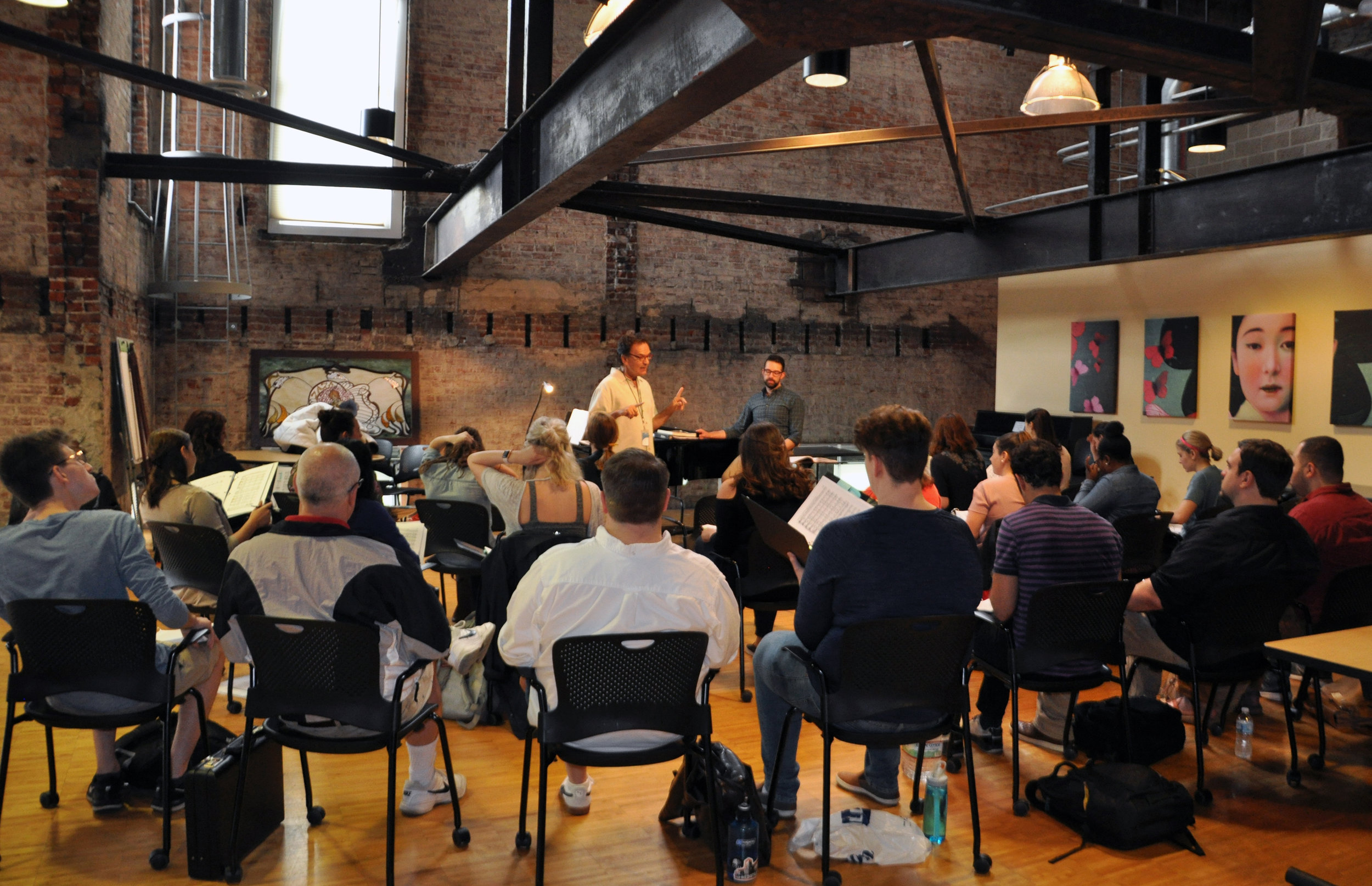Chorus Master Henri Venanzi leads the chorus rehearsal for La Traviata
They came in jeans, T-shirts and ponytails, carrying backpacks, water bottles, and their music. These gifted vocalists—members of the Opera Chorus—will play a critical musical and dramatic role in three of the 2018 Summer Festival’s operas.
The curtain has yet to rise, but Cincinnati Opera’s 2018 season is well underway. About two dozen singers arrived earlier this month for their first rehearsals in the Garret, the Opera’s brick-walled, fourth-floor studio in Music Hall.
Rehearsals began with the 28 members of the chorus for Giuseppe Verdi’s La Traviata. (The Flying Dutchman and Another Brick in the Wall will each feature choruses of 48 singers.) Rehearsals are led by Henri Venanzi, Cincinnati Opera’s charismatic chorus master since 1990.
If the singers appeared informal upon their arrival, they soared into professional stature the moment they began to sing. Their collective voices, which will carry to the far reaches of Music Hall, were thrilling in the studio environment, penetrating through to the bone.
About two-thirds of the chorus members have connections to UC’s College-Conservatory of Music; the other third have completed their music degrees. “Any of them could have a solo career,” said Managing Director Chris Milligan. “They are, without question, one of the best opera choruses in North America.”
During last Friday’s rehearsal, Venanzi blazed through the orchestral parts on the piano while Assistant Chorus Master Michael Ciavaglia conducted. When solo parts were called for, Venanzi sang the women’s roles in an unabashed falsetto, while Ciavaglia did credit to the male roles.
Venanzi instructed them to speak the Italian words first, in rhythm, then sing the words slowly, then at tempo. He stopped the group frequently. A demanding, yet engaging chorus master, Henri punctuated his quest for perfection with humor. “We must have purity of every note,” he said. “Otherwise, you’re engaging in ‘approxamatura’ singing.”
He made sure the singers knew the meaning behind important Italian words, like piangere, “to slightly cry.” He exhorted the tenors “to put an emotional intent” behind every line. “If you can speak with attitude, you can sing with attitude,” he said. And when it comes to rolling one’s r’s for clear diction, “Unless you’re Italian, I’d rather have you do too much than too little.”
Tenor John Overholt, singing in his third Cincinnati Opera season and his first Traviata, said that Venanzi inspired him “to portray the language clearly and naturally so that it sounds like a native-born singer.”
Venanzi warned the chorus members not to rest on their laurels when the audience bursts into applause, because the next entrance is imminent.
“Every entrance has a different character and shape,” he said. “There are these little entrances of two or three notes. Opera is full of them; they are like pieces of broken pasta. Breathe sooner and be ready. When one of those parts is missing, I say it goes from great opera to slop-era.”
Miles Wilson-Toliver, a CCM master’s student singing with Cincinnati Opera for the first time, was beaming during a rehearsal break. “I really appreciate Henri’s attention to language and his ability to communicate how important it is to convey the meaning of every word and every emotion,” he said. “He stresses that it’s really important that the chorus has a character, and he fleshes out each individual character within the chorus.”
It was only the second rehearsal, and already the Cincinnati Opera chorus was rolling its r’s, singing with attitude, and underscoring La Traviata’s plot as the voice of an energized and engaged populace.
For opera fans who love the excitement and volume of the chorus, there is much to look forward to in the season ahead.
Learn more about this summer's season opening-production of La Traviata.


